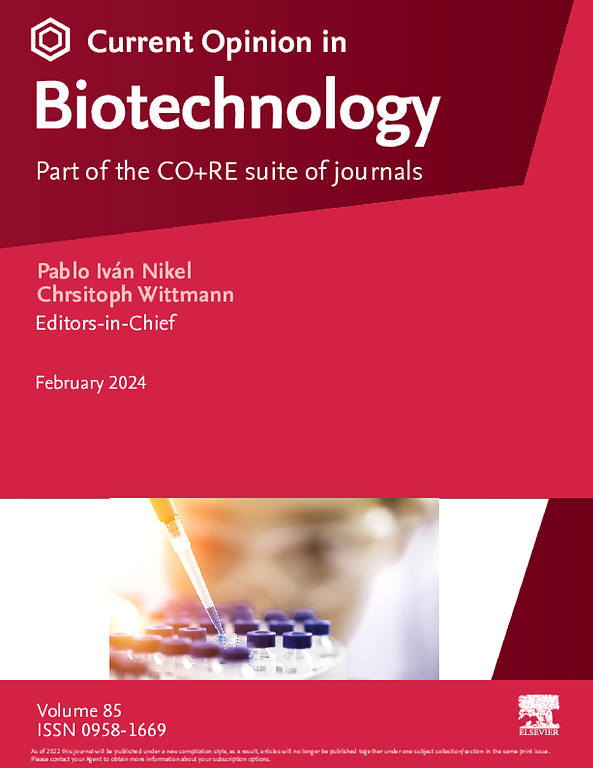Engineering next-generation chimeric antigen receptor-T cells: recent breakthroughs and remaining challenges in design and screening of novel chimeric antigen receptor variants
IF 7
2区 工程技术
Q1 BIOCHEMICAL RESEARCH METHODS
引用次数: 0
Abstract
Chimeric antigen receptor (CAR) T cells are a powerful treatment against hematologic cancers. The functional phenotype of a CAR-T cell is influenced by the domains that comprise the synthetic receptor. Typically, the potency of therapeutic CAR-T cell candidates is assessed by preclinical functional assays and mouse models (i.e. human tumor xenografts). However, to date, only a few sets of domains (e.g. CD8, CD28, 41BB) have been extensively tested in preclinical assays and human clinical studies. To characterize the efficiency of a CAR, different assays have been utilized to analyze T cell phenotypes, such as expansion, cytotoxicity, secretome, and persistence. However, each of these previous studies evaluated the importance of an assay differently, resulting in a wide range of functionally diverse CARs. In this review, we highlight recent (high-throughput) methods to analyze CAR domains and demonstrate their impact on inducing T cell phenotypes and activity. We also describe advances in computational methods and their potential for identifying CAR variants with enhanced properties. Finally, we reflect on the need for a standardized scoring system to support the clinical development of next-generation CARs.
下一代嵌合抗原受体-T 细胞工程:设计和筛选新型嵌合抗原受体变体的最新突破和仍然面临的挑战。
嵌合抗原受体(CAR)T 细胞是一种治疗血液癌症的有效方法。CAR-T 细胞的功能表型受合成受体结构域的影响。通常,临床前功能测定和小鼠模型(即人类肿瘤异种移植)可评估候选 CAR-T 治疗细胞的效力。然而,迄今为止,只有少数几个结构域(如 CD8、CD28、41BB)在临床前试验和人体临床研究中进行了广泛测试。为了描述 CAR 的效率,人们采用了不同的检测方法来分析 T 细胞的表型,如扩增、细胞毒性、分泌组和持久性。然而,以往的这些研究对检测方法重要性的评估各不相同,因此产生了多种功能各异的 CAR。在这篇综述中,我们重点介绍了最近分析 CAR 结构域的(高通量)方法,并展示了它们对诱导 T 细胞表型和活性的影响。我们还介绍了计算方法的进展及其在鉴定具有增强特性的 CAR 变体方面的潜力。最后,我们探讨了建立标准化评分系统以支持下一代 CAR 临床开发的必要性。
本文章由计算机程序翻译,如有差异,请以英文原文为准。
求助全文
约1分钟内获得全文
求助全文
来源期刊

Current opinion in biotechnology
工程技术-生化研究方法
CiteScore
16.20
自引率
2.60%
发文量
226
审稿时长
4-8 weeks
期刊介绍:
Current Opinion in Biotechnology (COBIOT) is renowned for publishing authoritative, comprehensive, and systematic reviews. By offering clear and readable syntheses of current advances in biotechnology, COBIOT assists specialists in staying updated on the latest developments in the field. Expert authors annotate the most noteworthy papers from the vast array of information available today, providing readers with valuable insights and saving them time.
As part of the Current Opinion and Research (CO+RE) suite of journals, COBIOT is accompanied by the open-access primary research journal, Current Research in Biotechnology (CRBIOT). Leveraging the editorial excellence, high impact, and global reach of the Current Opinion legacy, CO+RE journals ensure they are widely read resources integral to scientists' workflows.
COBIOT is organized into themed sections, each reviewed once a year. These themes cover various areas of biotechnology, including analytical biotechnology, plant biotechnology, food biotechnology, energy biotechnology, environmental biotechnology, systems biology, nanobiotechnology, tissue, cell, and pathway engineering, chemical biotechnology, and pharmaceutical biotechnology.
 求助内容:
求助内容: 应助结果提醒方式:
应助结果提醒方式:


